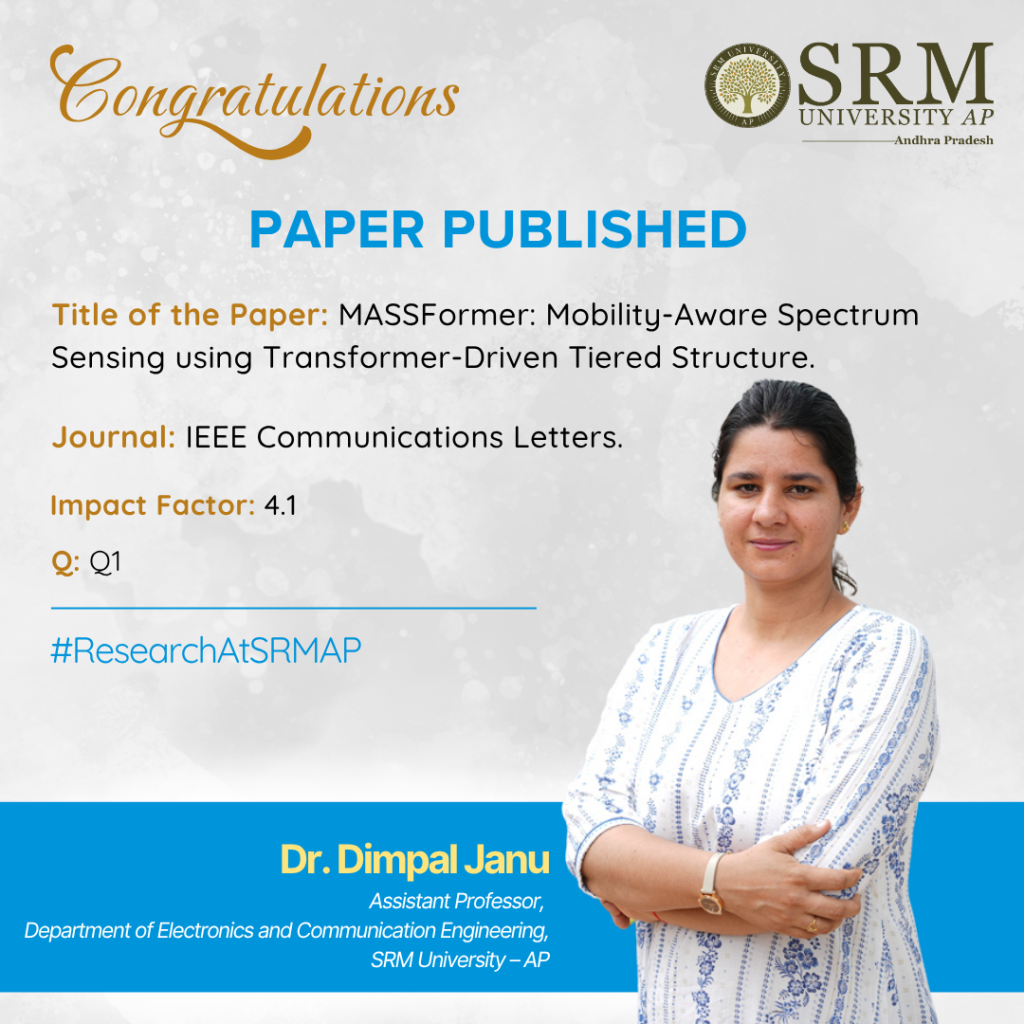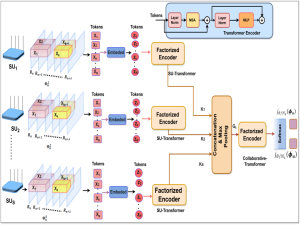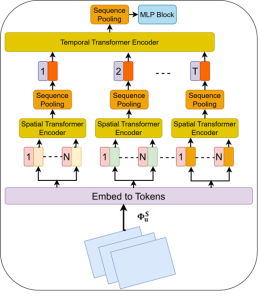
In the digital era, enhancing wireless connectivity is vital for systems’ accurate and efficient functioning. Working on a smart system to catalyse seamless wireless connectivity, Dr Dimpal Janu, Assistant Professor from the Department of Electronics and Communication Engineering, has published a paper “MASSFormer: Mobility-Aware Spectrum Sensing using Transformer-Driven Tiered Structure” in the Q1 journal IEEE Communications Letters. She has developed a novel cooperative spectrum sensing method based on MASSFormer that uses artificial intelligence, specifically a transformer model, to decide when to use a communication channel without causing interference.
Abstract
We develop a novel mobility-aware transformer-driven tiered structure (MASSFormer) based cooperative spectrum sensing method that effectively models the spatio-temporal dynamics of user movements. Unlike existing methods, our method considers a dynamic scenario involving mobile primary users (PUs) and secondary users (SUs) and addresses the complexities introduced by user mobility. The transformer architecture utilises an attention mechanism, allowing the proposed method to model the temporal dynamics of user mobility by effectively capturing long-range dependencies. The proposed method first computes tokens from the sequence of covariance matrices (CMs) for each SU. It processes them in parallel using the SU-transformer to learn the spatio-temporal features at the SU-level. Subsequently, the collaborative transformer learns the group-level PU state from all SU-level feature representations. The main goal of predicting the PU states at each SU-level and group-level is to improve detection performance even more. The proposed method is tested under imperfect reporting channel scenarios to show robustness. The efficacy of our method is validated with simulation results that demonstrate its higher performance compared to existing methods in terms of detection probability Pd, sensing error, and classification accuracy (CA).
Practical Implementation of Research
Smart cities & IoT Networks:
- MASSFormer enables intelligent spectrum sharing among a multitude of IoT devices in urban environments.
- It improves communication reliability in crowded and mobile settings, such as vehicular networks, smart traffic systems, or surveillance setups.
Social Implications of Research
MASSFormer is built to handle the mobility of users, which is essential in rural, remote, or developing areas where users often access the internet via mobile networks rather than fixed infrastructure. By enabling more efficient use of existing spectrum, the method helps extend internet access to remote and underserved regions, supporting education, healthcare, and economic development.
Future Research Plans
- Planning to develop hybrid models that blend classical detection with neural inference for improved interpretability and reliability.
- Use of federated learning so that SUs can collaboratively train models without sharing raw data.
Link to the article



